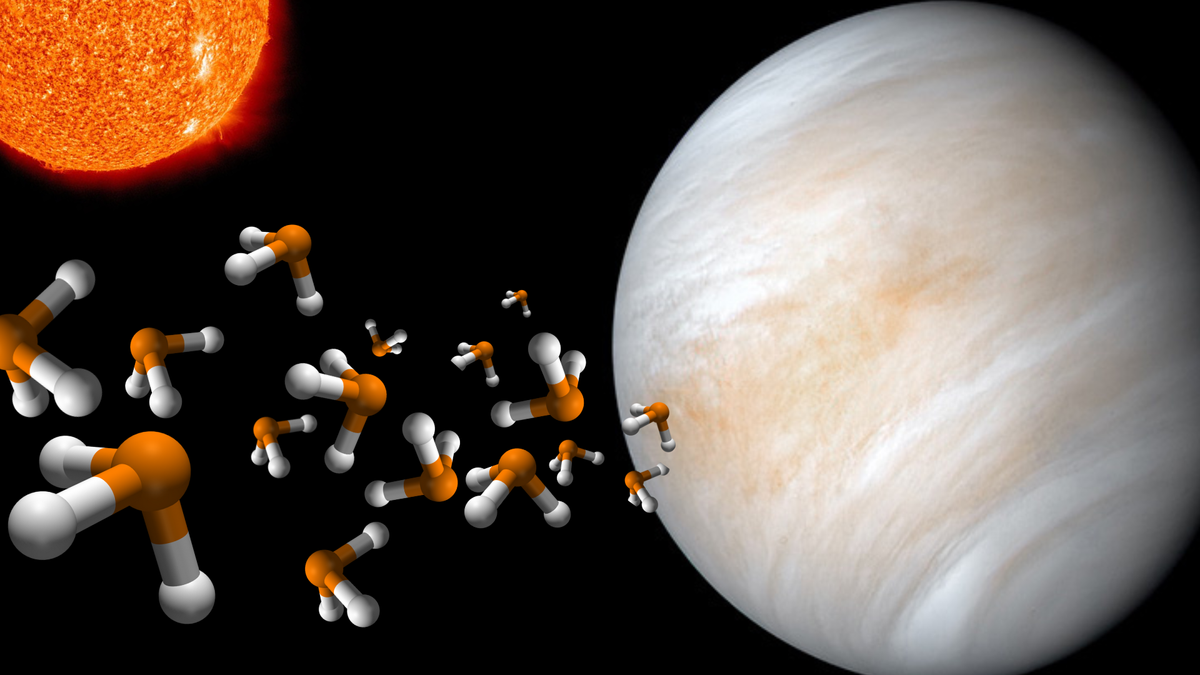- cross-posted to:
- space@lemmy.ml
- cross-posted to:
- space@lemmy.ml
New preliminary evidence for phosphine and ammonia in Venus’s atmosphere deepens the mystery of their origins, suggesting the possibility of a biological source. The detections, made using the James Clerk Maxwell Telescope and the Green Bank Telescope, point to potential microbial life in Venus’s clouds despite the planet’s extreme surface conditions. Space.com reports:
The new detections of phosphine and ammonia were obtained by a team led by Jane Greaves of the University of Cardiff using submillimeter radio wavelength data collected by the James Clerk Maxwell Telescope (JCMT) in Hawaii and the Green Bank Telescope in West Virginia. “We don’t know how you make phosphine or ammonia in an oxygenating atmosphere like that of Venus,” said team member and astrophysicist Dave Clements of Imperial College, London, in an interview with Space.com. Then again, it’s not clear why biology on Earth produces phosphine, either." Whether it’s in penguin poop or badger guts, we don’t know why bacteria make phosphine, but they do."
The JCMT’s initial detection of phosphine on Venus in 2020 by Greaves and her team was met by fierce disagreement from some quarters. This disagreement focused on how the data was processed and whether that was creating spurious signals since observations by other telescopes struggled to detect the phosphine. Clements said those technical disagreements have now been resolved and that the latest measurements, using a new detector on the JCMT called Namakanui (meaning ‘Big Eyes’ in Hawaiian), have come from three observing campaigns, each providing 140 times as much data as the initial detection. […]
Clements is open to the possibility that both phosphine and ammonia are being produced by some rare photochemistry in Venus’ upper atmosphere involving solar ultraviolet breaking up molecules and allowing phosphine and ammonia to form from the molecular debris. If that is the case, nobody has observed this process yet, not even in the laboratory. Another possibility that has been mooted is that the phosphine could be produced by Venusian volcanoes. Clements also pointed out that the European Space Agency’s Jupiter Icy Moons Explorer (JUICE) is making a fly-by of Venus in August 2025 to help slingshot it towards the Jovian system. JUICE carries instruments capable of detecting phosphine and ammonia, but there’s no guarantee that its instruments will be switched on and deployed at Venus.



As soon as I saw the title I knew there would be an Expanse reference in the comments :-)
Just finished rewatching it for the nth time. Still finding little bits I don’t remember from before.
If you haven’t done it yet, read the rest of the books. The show sticks pretty closely to the books, so you can pick up right where the show leaves off.
The audiobooks are great too, the narrator does a great accent for Alex, it’s fun.
Anyway, the story is totally worth finishing.